Tour
The Sony MDR-NC500D headphones are made of glossy black plastic with black faux-leather padding. The cups tilt and swivel around, and the band can extend (and also has padding).
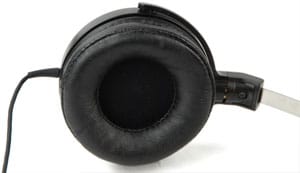
The padding is slightly triangular, with more padding toward the outside edge and less towards the inside.
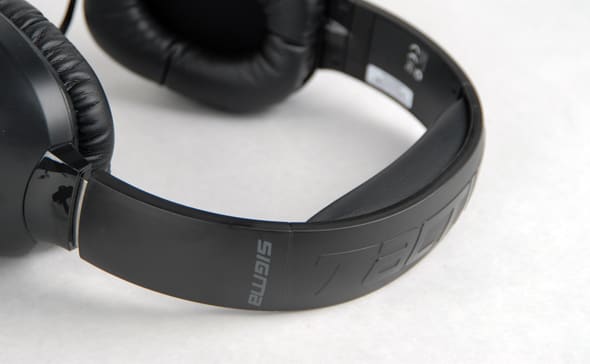
The left ear cup has ports for audio and power cables; the power cable port has a plastic cover to mask it when not in use.
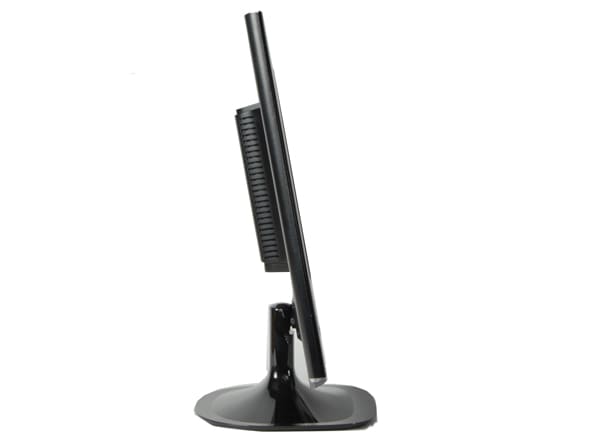
The right ear cup has a few buttons: AI NC MODE (lets the headphones listen to the ambient noise, then determine the appropriate noise cancellation level), a power switch, a Monitor Mode button (turns off playback and noise cancellation), and an LED indicator for power and 'listening' mode.

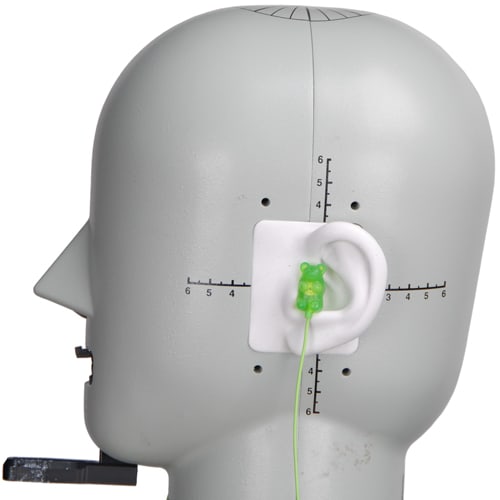
In the Box
{{section_header}}{{section.name}}{{/section_header}}
You will find all sorts of cool stuff in your NC500D box. In addition to the headphones, you'll find two audio cables of different lengths, a power cord, a 1/4-inch adapter, an airplane adapter, and a battery pack (complete with two Sony brand AA batteries).
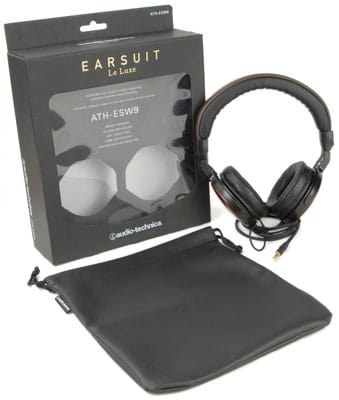
Durability
{{section_header}}{{section.name}}{{/section_header}}
The MDR-NC500D headphones are well built. The plastic case is durable, the pad covers won't tear particularly easily, and the twisting cups and extending band are robust. Of course, moving parts and a non-removable battery are both minor durability issues. The biggest durability issue, however, is the really thin cloth guarding the sound element. The sound element itself sticks out and would be unguarded if it weren't for the cloth draped over it. The inclusion of the short audio cable indicates these headphones are meant to be used while exercising. We can't see this very-permeable cloth doing a particularly good job keeping your gross sweat away from the sound element. This isn't a deal breaker by any means, however -- just something buyers should be aware of.
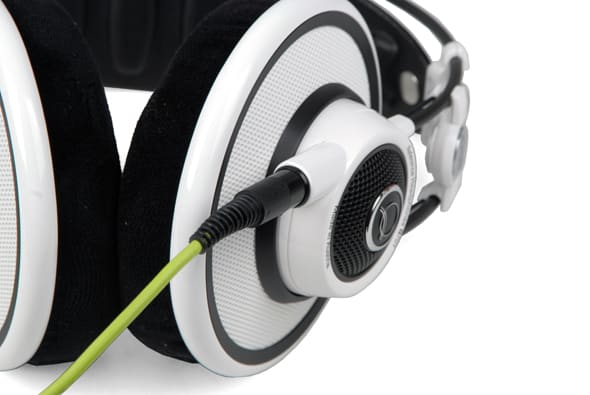
Also, although not directly a durability issue, the headphones squeal if something bumps up against the sound element. We're guessing it's just a 'Hey, watch it!' warning, but its inclusion doesn't say much for the safety of the sound element.
Aesthetics
{{section_header}}{{section.name}}{{/section_header}}
The Sony MDR-NC500D headphones are smaller than the average over-ear, decked out in faux-leather padding, and made of a glossy black plastic. As over-ears these headphones aren't exactly inconspicuous, but at least they look sharp. The only aesthetic issue that might arise are the fingerprints you'll leave behind on the glossy, black plastic. Other than grabbing your prints at every opportunity, the NC500Ds look good. It doesn't jump out and scream 'Look at me, I am gorgeous,' but then again, most adult users wouldn't want loudly narcissistic headphones. Lookin' good, MDR-NC500D.
Summary
{{section_header}}{{section.name}}{{/section_header}}
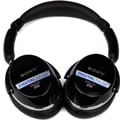
The Sony MDR-NC500D headphones are a set of noise-cancelling over-ears. With the noise-cancelling feature and premium price ($400), it certainly appears the NC500Ds are Sony's answer to Bose's QuietComfort series. Even the carrying case looks identical to the one Bose offers. Like the Bose headphones, the NC500Ds are comfortable, don't move around much when your head does, and come with some good cable and adapter options. Unlike the QuietComfort headphones, however, the NC500Ds offer multiple levels of noise cancellation, which are catered to three different environments: airplane, public transportation, and office.
Frequency Response
{{section_header}}{{section.name}}{{/section_header}}
The Sony MDR-NC500D's frequency response has some issues, but performs well enough overall. The bass receives a bit of a boost, but falls within our limits once they start. A set of mid-range tones receives a big boost, jutting outside our limits slightly. After this peak comes a jagged fall to the bottom limit. This means higher-pitched sounds might sound a bit softer than they should, but only by a very, very slight amount. Most won't notice.
When looking at a frequency response graph, you should always look out for sharp slopes, anything that darts upward or downward suddenly. This represents a sudden, quick change in decibel level without much change in frequency. For example, after the mid-range peak in the graph at right, the graph drops off fairly sharply, spikes up again, then falls again. The top of the second, smaller spike to the subsequent trough represents a 20-decibel drop. This is a noticeable difference; for reference, 65 decibels is like being in a moderately busy restaurant, and 80 decibels is like being in your kitchen when the garbage disposal is running. If you have an instrument that played in this range, the higher notes would be noticeably softer than the lower ones.
Again, the MDR-NC500Ds perform well overall, but the mid-range emphasis is a little erratic and the higher pitches sound slightly muffled.
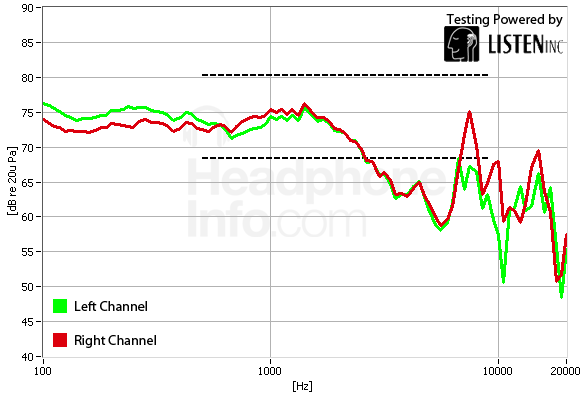
The average score for this section (as of this review) is 3.72, so comparatively the NC500Ds perform slightly better than average.
In terms of the comparison headphones below, it's trounced by two units: the SE-A1000 and the ER6i. The SE-A1000s really don't add much of its own influence to the playback, producing a very smooth line that stays in the limits. The same goes for the ER6i, only they have a slightly weaker bass response.
The HD 555s have the score closest to the NC500D's, which makes sense if you look at both. Both dip below the bottom limit toward the high end - meaning high-pitched sounds sound a bit muffled - but the HD 555s emphasize them less than the NC500Ds. The NC500Ds over-emphasizes a cluster of mid-range frequencies, but only slightly, whereas the HD 555s come close to underemphasizing them. The NC500Ds also beat the HD 555s in terms of bass response.
The two Bose headphones simply have problems with frequency response. Their emphasis becomes erratic in the mid-range frequencies, and just about everything but bass is under-emphasized. The NC500D performed far better than both.
Distortion
{{section_header}}{{section.name}}{{/section_header}}
The Sony MDR-NC500D headphones feature a consistent amount of distortion, although at no point did that level ever get above 1 percent. Therefore, most people shouldn't notice any issues, but stringent audiophiles would find these levels to be less than ideal. There aren't any real spikes, although around 1 kHz the left channel shows slightly more distortion than the right.
Distortion like this, which is relatively minor but stretches across the whole spectrum, is only really noticeable if you compare it to the original. If you're a purist, these levels will be unacceptable, but for the average user, the Sony MDR-NC500Ds will be just fine.
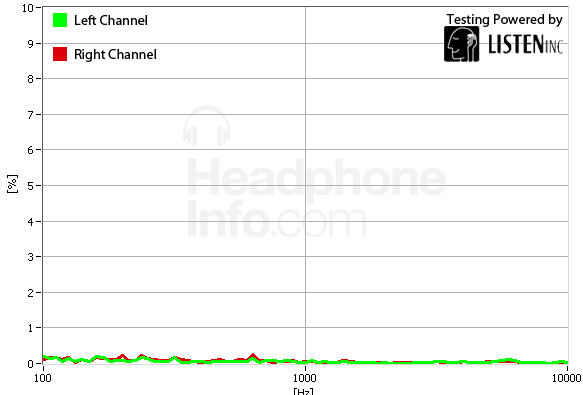
The Pioneer SE-A1000 and the Etymotic ER6i also feature continuous, low levels of distortion. Both of the Bose noise-cancelling headphones manage to show less overall distortion, although the QC2 has two small bumps. The Sennheiser HD 555 headphones have some issues with the low end, but are otherwise distortion-free.
Tracking
{{section_header}}{{section.name}}{{/section_header}}
The MDR-NC500Ds perform well on this test, for the most part, sticking to even emphasis for a good chunk of the graph. Toward the high end the graph starts looking a bit erratic, but we've seen worse. Really, there isn't much to say about this one since it stays so relatively flat. This is not performance to worry about unless you're an audiophile.
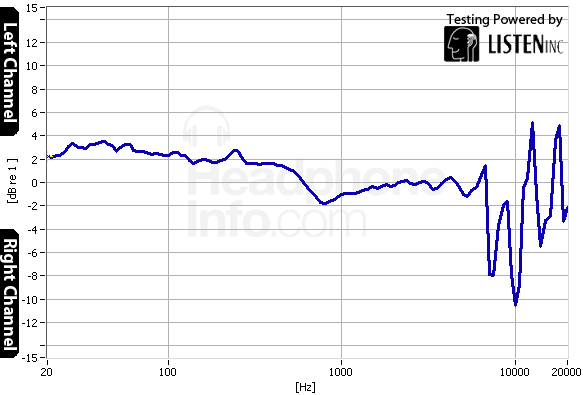
Just from looking at numbers, you can tell the NC500D is just over the hump of the bell curve. It's also somewhat easy to tell from just looking at the graphs: a flat horizontal line is ideal, a bunch of squiggles is bad. For a great example of close to perfect, check out the Etymotic ER6i's tracking graph. For an example of what's bad, check out either QuietComfort, which look like seismographs.
Maximum Usable Volume
{{section_header}}{{section.name}}{{/section_header}}
The Sony MDR-NC500Ds are capable of outputting 110.22 decibels. We typically look for headphones to output 120 decibels, since some like their music loud (any more than that and you're going deaf). A maximum usable volume of 110 decibels is by no means horrible, however, as it's always safer to listen at lower levels. This should be loud enough for most, although those who really want to pop their ear drums or those who are hard of hearing might want a bit more.
Typically headphones score between 110 and 125 decibels. While the NC500Ds score toward the bottom of this range, the differences therein really aren't gigantic.
Isolation
{{section_header}}{{section.name}}{{/section_header}}
Active cancellation helps block out quite a good deal of bass, which otherwise would flow into your head unimpeded. That being said, the active cancellation actually slightly hinders the headphones' performance in terms of high-mid cancellation.
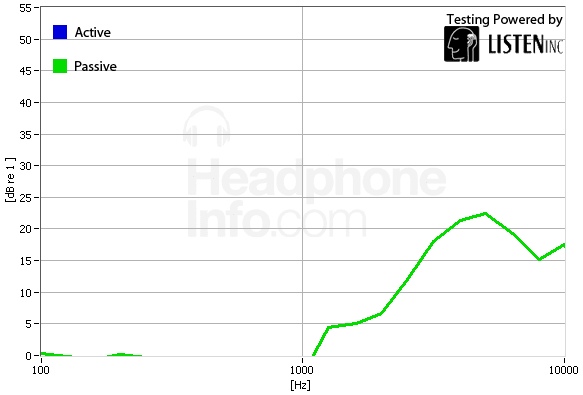
For the majority of those reading this review, this section is the most important one. Exactly how well does the NC500D's noise cancellation do, compared to other competitors - or, for that matter, how well does active noise cancellation even work to begin with? If you find yourself asking that question, then we certainly have an exciting array of graphs for you. Again, the blue lines are active cancellation, green lines are passive. No blue line means no active cancellation.
First of all, good ol' earplugs seem to beat noise cancellation in terms of overall isolation, as evidenced by the ER6is. If you're looking for some spot reduction on bass, however, then active cancellation is something to look into. In this regard, the MDR-NC500D headphones score between the QuietComfort 2 and 3. The QuietComfort 2s form a poor seal with the head (the padding is fuzzy and about as air-tight as a stuffed bear) so we weren't surprised to see the NC500D win that match-up. It's very similar to the QC3s in terms of forming a tight seal with your head (both headphones use similar material on their pads), but the QC3s block out a bit more bass.
While the NC500D and its noise cancellation aren't the worst out of the headphones we've reviewed, they aren't as good as the Bose QuietComfort 3 headphones, and both underperform versus a pair of in-ear headphones.
Leakage
{{section_header}}{{section.name}}{{/section_header}}
The MDR-NC500D aren't the quietest headphones ever - on the contrary, they actually leak a bit more that you'd think, given their cancellation abilities. This being said, the NC500D has the second-highest score in this category for a non-in-ear headphone (the Sony MDR-DS6000 currently occupies first place). This achievement doesn't say all that much for the NC500D, but it also doesn't say much for non-in-ear headphones in general. If you like listening to your music really loud, someone sitting next to you will probably hear it. If you're in a library or quiet office, everyone will glower at you.
Short-Term Use
{{section_header}}{{section.name}}{{/section_header}}
In order to test comfort, we unfortunately have to default to our own subjectivity. While this is great news for anyone with our exact head specifications, for others this section will serve as a mere guide. Please, harass the store to let you try on headphones before purchasing. Uncomfortable headphones are only slightly better than broken headphones.
If nothing else, the Sony MDR-NC500D headphones are comfortable. They don't grip the head too tightly, but they also don't shake around. The pads have a soft covering, and gently rest against the sides and top of your head (since the band is thoughtfully padded as well). While the headphones are a bit bulky, they never feel heavy. The buttons are easy to reach, although they could have more diverse shapes to aid in finding them by touch.
We took the headphones for a jog, and they tended to stay put while we moved, although we wouldn't recommend getting all sweaty with these headphones: there's just a thin cloth between your ears and the sound element.
The only caveat we have is for those who aren't used to noise cancellation: chances are it'll make your head feel funny for the first few hours. We've heard it described as feeling like one's head was under water, like the person was adrift in space, like the person had to pop their ears, etc. We recommend wearing the headphones for at least a few hours to get used to the sensation before making any judgments in regards to comfort.
Extended Use
{{section_header}}{{section.name}}{{/section_header}}
After a wear session of six hours, we felt exactly the same. The pressure didn't seem to grow with time, in fact, as we got used to them the pressure actually seemed to lessen slightly. Conversely, wearing these headphones can make your ears a bit hot since they're basically ear muffs with a good seal. Overall, however, the MDR-NC500D headphones are very comfortable, even during extended use.
Cable Connectivity
{{section_header}}{{section.name}}{{/section_header}}
The main cable for the MDR-NC500D headphones is 60 and 5/8 inches long, which is just a bit over 5 feet, and also 1.53 meters. There's a second, shorter cable as well, which measures about 20 inches/1.67 feet/0.51 meters. Unfortunately, there isn't a 1/8-to-1/8 plug adapter included in the box. Unless you have one lying around, you'll have to abandon your dreams of the cables joining forces to create a single, longer cable.
The main cord should be long enough for most home theater setups, although larger rooms might require the purchase of an extension cord. The shorter cord should accommodate those with arm band media players.
The MDR-NC500D package also comes with two adapters: 1/4-inch and airplane. The second prong on the airplane adapter can actually fold back, just in case you find an 1/8-inch port that only accepts bulky adapters.

These are the two cords that come in the box. It would've been nice to have a male-to-male connector to form one long cord, but alas, we do not live in such a world.
Customizability
{{section_header}}{{section.name}}{{/section_header}}
There aren't really customization options included in the packaging. You can tilt the ear cups and the band extends slightly. There is also the short cord for exercisers with arm-mounted music players. There aren't any extra cup pads included, or anything else to help you customize. If you want to customize your MDR-NC500D further, you'll just have to break into your collection of Lisa Frank stickers. Nothing says 'awesome headphones' like a sparkling, neon pink unicorn.
Portability
{{section_header}}{{section.name}}{{/section_header}}
These headphones aren't especially portable. Over-headphones are large by design. It's not like you can just shove the NC500D into your pocket when you're done listening.
The NC500Ds come with a case that looks almost identical to the Bose cases in shape, size, and useless little pouch on the backside. This case has more internal pouches and nooks and crannies for things to hide in, however. Once you've stowed away all your junk, you can conceal everything with a cloth flap before putting your headphones inside. This keeps all the metal bits away from the scratchable plastic and tearable padding. Though this is an absolutely great case, it still displaces a lot of volume. A strap is included, so you can brandish your NC500D like a quiver of arrows or a purse, but both these options are lame.
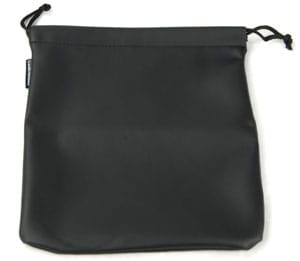
The pouch doesn't have any inner pockets or cord-managing features, so it's not particularly helpful.

The pouch doesn't have any inner pockets or cord-managing features, so it's not particularly helpful.

The pouch doesn't have any inner pockets or cord-managing features, so it's not particularly helpful.

The pouch doesn't have any inner pockets or cord-managing features, so it's not particularly helpful.
There is also the issue of needing to charge your headphones every 16 hours or so, plus or minus about 30 minutes (kudos to Sony for not lying on their spec page). This isn't the biggest deal, but if you forget to keep it charged your portability drops to zero.
Maintenance
{{section_header}}{{section.name}}{{/section_header}}
Most headphones get just a handful of points here for being so inaccessible. The MDR-NC500D almost has the opposite problem. First of all, the cups are removable, which is always appreciated. Under the cups, however, you'll find the sound element is just barely draped with a piece of cloth. This means if you're getting sweaty, your sound element is also getting a bit balmy. The cloth is also held on by glue, which means you can't just remove the cloth and replace it without some sort of adhesive in your cupboard. The cloth is a prime candidate for velcro, and will probably hold the cloth better than a few dabs of rubber cement.
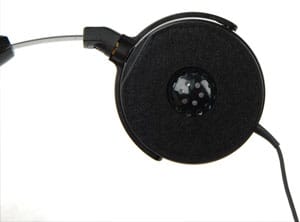
Once you take off the pad, there isn't much more you can do.

Once you take off the pad, there isn't much more you can do.
Other Features
{{section_header}}{{section.name}}{{/section_header}}
Battery
These headphones are battery dependent, which is annoying. They have a battery life of 16 hours, which is pretty good, but it's still annoying to not be able to use them as normal headphones when the battery's dead.
The battery pack allows the headphones to play for 12 hours on two AA batteries. It's certainly a nice option to bring with you on a long trip, but it's a bit too bulky to be particularly wieldy. Still, we appreciate the option.

This is the battery port, which accepts one AAA.
Active Noise Cancellation
We'll begin this section by letting the Sony MDR-NC500D's instruction booklet describe the headphones, with regard to their noise-cancelling abilities: 'It is the very realization of 'smart headphones' which can follow man's feeling. With the AI Noise Canceling function only made possible by digital, please enjoy its comfortable cancelling effect.' We will enjoy its comfortable cancelling effect, Sony. Thank you.

In addition to the feature itself, which mainly gets its points from our isolation test, the MDR-NC500D headphones have three modes to choose from. There's an AI NC MODE button on the ear cup, which lets the headphones decide which of its three noise cancellation frequency arcs is the most appropriate. If you'd rather not leave your fate in the cold, unfeeling hands of a machine, you can also cycle through these modes manually: hold the AI NC MODE button until you hear a tone, then press that button to cycle through the modes.
Though a minor feature, you can hit a button on the ear cup to turn off playback and noise cancellation. It's useful for listening to people if you're too lazy to take off the headphones, or turn off the power. Overall, though, it isn't that useful.
Value
{{section_header}}{{section.name}}{{/section_header}}
If you're looking for a solid, comfortable pair of noise-cancelling headphones, the Sony MDR-NC500D headphones are a good choice. What they aren't, however, is cheap. At $400, these headphones cost more than either of the Bose noise-cancelling headphones we've reviewed, and they have inferior audio quality as well. These headphones and the Bose headphones are all overpriced for what they do, but the NC500D have the distinct disadvantage of costing the most and offering the least. Does this mean they're bad? No, it doesn't - it just means they aren't a good value, strictly in terms of what you're getting for each dollar you spend.
Conclusion
{{section_header}}{{section.name}}{{/section_header}}
The Sony MDR-NC500D headphones aren't bad headphones. They are mediocre headphones that cost as much as many good headphones. They should have been priced at $200 and marketed as a mid-range, noise-cancelling headphone solution. Instead, it appears Sony tried to compete with Bose, or even make the NC500D seem like a higher-quality option. Unfortunately, they aren't higher-quality, just higher-priced.
Overall, we like the NC500D. They are comfortable, offer good enough audio quality for mainstream audiences, and came with a significant amount of extras. The only deterrent is the $400 price tag, which is quite a hefty fine. Again, solid headphones for the average user who wants noise-cancelling headphones. Just make sure you pick them up at a 50-percent off sale.
Meet the tester
Mark Brezinski works on the Home Team, reviewing refrigerators, minifridges, dishwashers, washing machines, dryers, air conditioners, air purifiers, and fans.
Checking our work.
Our team is here to help you buy the best stuff and love what you own. Our writers, editors, and experts obsess over the products we cover to make sure you're confident and satisfied. Have a different opinion about something we recommend? Email us and we'll compare notes.
Shoot us an email